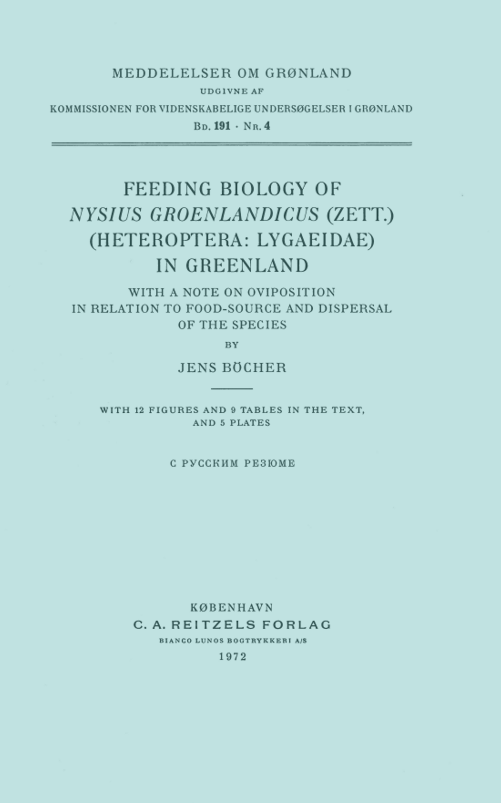Feeding Biology of Nysius groenlandicus (Zett.) (Heteroptera: Lygaeidae) in Greenland, with a Note on Oviposition in Relation to Food-Source and Dispersal of the Species.
DOI:
https://doi.org/10.7146/mog.v191.150082Abstract
The habitat of Nysius groenlandicus (ZETT.) and field observations of feeding indicated that seeds constitute the food. This was confirmed experimentally; the species is polyphagous, but some seeds are preferred to others, and some are unsuitable. In certain cases the purpose of flower visiting seems to be drinking of nectar. Field studies on the foraging on two species of Compositae demonstrated a cyclic change in the number of bugs attending the capitula. The number was at a minimum at noon and attained its maximum late in the afternoon or in the evening. Mainly females foraged in the capitula, and the percentage of nymphs was lower than on the ground surface. Because of a tendency for N. groenlandicus to oviposit on seeds and fruits, many of which are equipped with a parachute device, it is suggested that the eggs are frequently dispersed by the wind attached to airborne seeds and fruits. This might account for the ubiquity of the species in Greenland.

Downloads
Published
How to Cite
Issue
Section
License
Coypyright by the authors and the Commision for Scientific Research in Greenland. No parts of the publications may be reproduced in any form without the written permission by the copyright owners.

